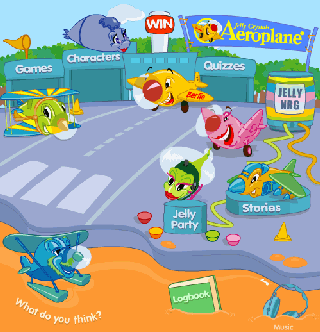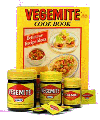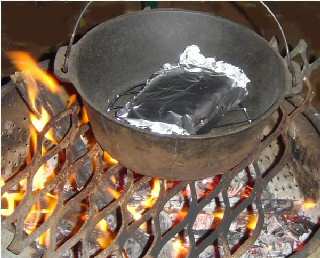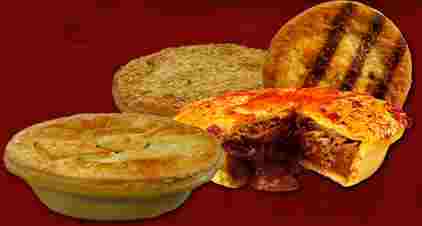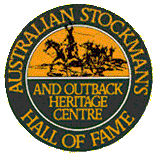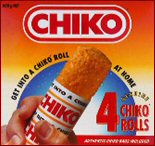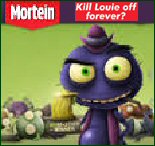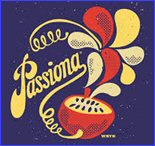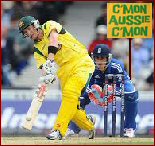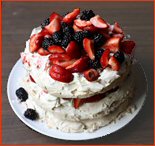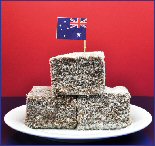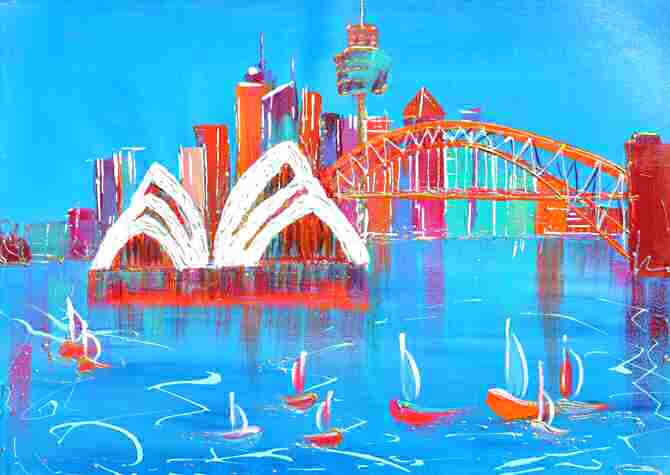

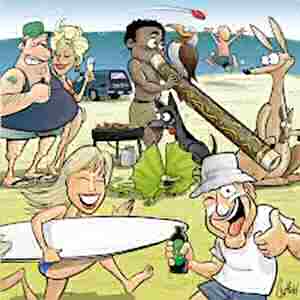
Opals
ANZACs
Australian Books Journal and Reports in eBook Form
eBooks
Australian Literature
Henry Lawson
Australiana
Banjo Paterson
Tales for the Bush Mary Vidal
Lucy Cooper John Lange
Clara Morrison: A Tale of....Gold Fever Helen Spence
Australiana
Botany Bay John Lange
For the Term of His Natural Life Marcus Clarke
A Song of the Republic Henry Lawson
The Wreck of the Derry Castle Henry Lawson
Australiana
Robbery Under Arms Thomas Browne
The Man From Snowy River Banjo Paterson
While the Billy Boils Henry Lawson
The Drover's Wife Henry Lawson
Australiana
Waltzing Matilda Banjo Paterson
Past Carin' Henry Lawson
My Brilliant Career Miles Franklin
Australiana
An Outback Marriage Banjo Paterson
We of the Never Never Aeneas Gunn
Getting of Wisdom Ethel Florence
Age of Consent Norman Lindsay
Australiana
The Shearer's Colt Banjo Paterson
The Man Who Love Children Christina Steed
The Harp in the South Ruth Park
Shoes of the Fisherman Morris West
Australiana
Voss Patrick White
The Chant of Billy Blacksmith Thomas Keneally
Poor Fellow My Country Xavier Herbert
Monkey Grip Helen Garner
Schindler's Ark Thomas Keneally
Australiana
The Sound of One Hand Clapping Richard Flanagan
True Story of the Kelly Gang Peter Carey
ANZACs
Australian Books Journal and Reports in eBook Form
eBooks
Australian Literature
Henry Lawson
Australiana
Banjo Paterson
Tales for the Bush Mary Vidal
Lucy Cooper John Lange
Clara Morrison: A Tale of....Gold Fever Helen Spence
Australiana
Botany Bay John Lange
For the Term of His Natural Life Marcus Clarke
A Song of the Republic Henry Lawson
The Wreck of the Derry Castle Henry Lawson
Australiana
Robbery Under Arms Thomas Browne
The Man From Snowy River Banjo Paterson
While the Billy Boils Henry Lawson
The Drover's Wife Henry Lawson
Australiana
Waltzing Matilda Banjo Paterson
Past Carin' Henry Lawson
My Brilliant Career Miles Franklin
Australiana
An Outback Marriage Banjo Paterson
We of the Never Never Aeneas Gunn
Getting of Wisdom Ethel Florence
Age of Consent Norman Lindsay
Australiana
The Shearer's Colt Banjo Paterson
The Man Who Love Children Christina Steed
The Harp in the South Ruth Park
Shoes of the Fisherman Morris West
Australiana
Voss Patrick White
The Chant of Billy Blacksmith Thomas Keneally
Poor Fellow My Country Xavier Herbert
Monkey Grip Helen Garner
Schindler's Ark Thomas Keneally
Australiana
The Sound of One Hand Clapping Richard Flanagan
True Story of the Kelly Gang Peter Carey
Tysaustralia

Aeroplane Jelly



Grasswren
Play

Bert Appleroth was employed as a tram conductor. He made good use of this opportunity by going into shops along the way selling jelly crystals. Sales were so good that Bert started up a business making jelly crystals in a shed in Paddington, New South Wales. Aviation was new technology in the 1920s thus his product was named Aeroplane Jelly. More than ten million packets of Aeroplane Jelly are sold in Australia every year. An Australian icon.
The formal defnition of Australiana is Australian books,furniture and paintings of historical interest. lt also includes Biily Tea, vegemite, Aeroplane jelly, damper etc. In other words things that are of interest and importance to Australians.
Campers in the bush make Billy tea over an open fire in any utensil, usually a tin can.
Gumleaves are placed in the boiling tea to infuse their natural flavor into the brew.
Billy Tea can be purchased from the shop today. Remember to put a fire green gumleaf in before you drink it.
Gumleaves are placed in the boiling tea to infuse their natural flavor into the brew.
Billy Tea can be purchased from the shop today. Remember to put a fire green gumleaf in before you drink it.
Billy Tea is made by Lyons Tetley (australia) Pty. Ltd


Play

Play

Australian arts and craft
Engllish influence
Margaret Preston
Nell Holden
Australiana
Sturt School
Sturt Pottery
Art Association
Elisabeth Nagel
Flower children
Ray Norman
Gwin Piggot
Australiana
Jeff Mincham
Bruce Nuske
Liz Williamson
Aboriginal handicraft
Australian Furniture
Australiana
Cedar
Greece
Ancient Rome
Egypt
Art Nouveau
Edmund Rosenberg
Australiana
Art Deco
Modernism
Grant Featherstone
Furniture Mass Production
Contemporary Australian Furniture
Engllish influence
Margaret Preston
Nell Holden
Australiana
Sturt School
Sturt Pottery
Art Association
Elisabeth Nagel
Flower children
Ray Norman
Gwin Piggot
Australiana
Jeff Mincham
Bruce Nuske
Liz Williamson
Aboriginal handicraft
Australian Furniture
Australiana
Cedar
Greece
Ancient Rome
Egypt
Art Nouveau
Edmund Rosenberg
Australiana
Art Deco
Modernism
Grant Featherstone
Furniture Mass Production
Contemporary Australian Furniture
Damper
OPALS
AUSTRALIANA
MEAT PIES

Play


During the 19th and into the 20th centuryAustralia depended on products that could be stored and easily transported. Cities were spread along the coast, hundreds and even thousands of miles apart. Goods had to be imported by ship from the United Kingdom to the major cities. Then they had to be transported by horse and buggy hundreds of miles inland. These staples included flour, tea and sugar. Cooking was done on a camp fire kindled from whatever was lying around - leaves, sticks, logs. Flour was mixed with baking powder, salt and water, then placed in a pan. This Australiana icon was Damper. The fire was "damped" down to prevent the "bread" from burning. The fresh bread was ready to eat in 10 minutes. There was no need to store this food: flour was kept in a dry pouch in a backpack. The bread could be "spiced-up" with whatever was available: sugar, dried fruit, cheese or herbs.
In 1926 Dr. Cyril Callister of the Fred Walker Company worked hard to lind a use for this rich source of vitamin E. He was successful in developing a tasty spread and Fred Wa|ker's daughter gave it a name - VEGEMITE. When spread on bread or toast it has a strong yet pleasant taste. Though it is salty. Australian children took to it straight away. An in the 1950s used the phrase "Were happy liittle vegemites, as bright as bright can be. We all enjoy our vegemite for breakfast, lunch, and tea."
Though Dr. Callister at first believed only adults would like the strong taste, children liked it more. In the supermarkets today children are often heard saying to their mothers: "have you got the vegemite Mum?" australian culture
Australians have always loved their beer, but there is a by product from the brewing process which increases in volume and ultimately becomes a problem, i.e., what do we do with Brewers Yeast? Well, make it into a tasty food. Australian culture
Opals were first discovered at tarrawilla cattle station, near Adelaide, in 1849. They were very brightly colored compared to opals found in South America and Hungary. There was demand for them, so they were put on the world market in the 1890s. Australian culture
Opal is AustraIia's National Gemstone. Australia produces 95% of the wor|d's natural precious opal supply. Though not so expensive as other gemstone they are nice to own.
The color of an opal is a magnificent thing. Unlike any other gem, opals can display all the colours of the rainbow in an iridescent, moving pattern of red, green, blue, yellow, purple, aqua, pink, and any other colour you can imagine. The pattern and arrangement of the colour which is displayed in an opal can take on many beautiful forms, and the movement of color across the face of a stone is known as the 'play of colour'.

Electronic Australiana
Australians eat 250 million pies a year. That's around 13 a year each, and on top of that we munch our way through an additional 20 other pastries such as pasties, sausage rolls and party pies. In fact there would not be a town in Australia where you could not buy a hot pie, either pre-packaged or freshly baked. Hot pies remain the biggest selling favourite at sporting events and festivals throughout Australia.
The actual origin of the meat pie in Australia is not known, but the first recorded mention of the 'pie' appeared in 1850 in the Melbourne Argus which reported that the Councillors preferred a meat pie from the pub opposite rather than the food provided in chambers. Australian culture
Channel 7 and Channel 9 television cover the Australian meat pie competition every year. The idea for a meat pie competition was put forward by Craig Perry who used to work for GFW Foodservice. It was a good concept from the beginning - increasing exposure for meat pie makers nationwide.
The Aussie meat pie competition was so successful that it was moved from Sydney to Melbourne in 1991 because of public demand. Sydney and Melbourne have been the alternate locations from 1990 to 2000. Then it moved to Brisbane in 2001. Since that time it has alternated again between Sydney and Melbourne.
This mobile food is a fry-up of chicken meat and vegetables in a soft, chewy pastry. It can be fried, steamed or cooked in an oven. In the 1960s it was popular at outdoor sporting events. Many a youngster was sent to the "hill" with a handful of cash to buy Chikos for their group of spectators. It was ideal to eat on the run. An Australian icon, 40 million were sold every year in the 1960s and 70s. Caterer Frank McEnroe developed the roll in 1950.
A jolly little song was written with the One Day World Series Cricket in mind. It was a promotional song that is still widely remembered. Though there were only ever teams from three countries involved, different countries except for Australia, it was followed as if it was a real world series and was the forerunner of all the international tournaments held across the world today. It was an advertising jingle for the Channel 9 TV broadcast. C'mon Aussie C'mon
A pesky little insect was a cartoon insect who sang a song about the power of Mortein. He was first seen on black and white television and became a national icon. He took the TV stage in 1957 a year after television began in Australia Even today he still reappears after succumbing to the insect spray in a previous cartoon. The song says, "He was bad, mean and mighty unclean, and he spread disease with the greatest of ease." C'mon Aussie C'mon
It was an icon cordial for youngsters in Australia. Though the drink may was very sweet, children loved it. Notably, it left a stain around the lips. Kids could mix their drinks themselves which they eagerly did. It was advertised as Australia's Favourite Cordial Since 1927. Passiona made from passionfruit still remains the most popular cordial flavor. It was first made by Spencer Cottee a dairy farmer who used his surplus fruit. In 1967 Passiona demand exceeded supply.
An interesting dessert was created by Bert Sachse at tbe Espanade Hotel, Perth. The date of origin was initially recorded as 1935. This was incorrect. He made it years before this. Seeing this discrepancy, New Zealanders laid claim to the dinner "finisher". The Australian Women's Weekly published a pavlova recipe in 1937. named in honor of Russian ballerina Anna Pavlova who toured Australia in the 1920s, the meringue, cream and fruit dish is revered in Australia.
While it is said that the lamington originated elsewhere, the cake was first made in Australia. A layer of sponge is covered by a layer of chocolate sauce, followed by a coat of desiccated coconut then topped off with cream and strawberry jam. It is cut into cubes to serve. It is not known whether it was named after the governor of Queensland at the turn of the 20th century or his wife Lady Lamington. However, it is popular across Australia.
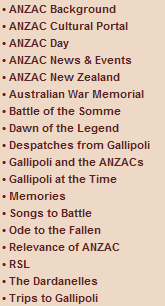
ANZAC
In the early morning of 25 April 1915 during the First World War soldiers of the Australian and New Zealand Army Corp {ANZAC) landed in Turkey at the Gallipoli Peninsula. australiana
Every year since that time people of Australia and New Zealand have honoured the fallen in solemn ceremonies across both nations. The landing at Gallipoli was the first time a united force from the two former British colonies had fought in war under combined leadership with the British, the highest ranking antipodeans being Brigadier Generals. British leadership is blamed for the loss. australiana
As the battle commenced, it became clear that a victory would not be possible. Despite repeated advances the Turkish soldiers fought and took ground back. Ultimately, both sides reached a stalemate where neither was gaining any advantage. It was then decided that the ANZACs should withdraw. The Turkish military gave the fallen honourable burials. Great respect was gained. australiana
Today, Australians and New Zealanders go to Gallipoli in Turkey on the 25th April for the Dawn Service in memory of those who gave their lives. australiana

AUSTRALIAN BOOKS, JOURNALS 8: REPORTS in eBook form
Many early Australian writings are now available as eBooks. They include books, Journals of sea and land explorers, Poets such as "Banjo" Paterson and writings by white settlers. Project Gutenberg Australia is collating tbis material.
Books stored bv author's name: Great Australian Books particularly those of a cIassic nature australiana
The stock comprises,
Australian Biograghies in a dictionarv Format with works bv over a thousand distinguished Australians australiana
Information about the Discoverv of Australia consisting of a broad bodv of historical work australiana
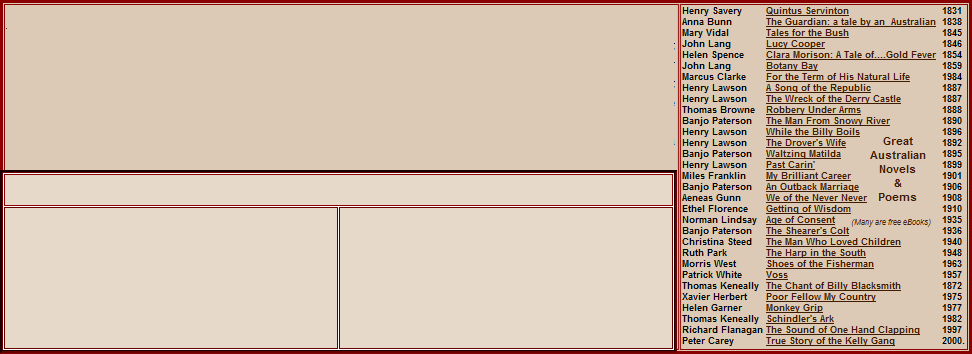
AUSTRALIAN LITERATURE
Australian novelists have received many prestigeous international awards. They have for the most part based their works on the rich Australian culture which derives from the nature of the country itself. Hard tmes have come upon the people from bush fires, drought, the harsh environment demanding hard labor, bushranges, floods and wars. The family has sustained Australians in these difficult times. Publishing was not easy at first because Australia was dominated by Britain. Australian life was a curiosity to the British who continued to provide literature from mainly English sources. A timeline of ground breaking Australian work is shown in the table.
Australian novelists have received many prestigeous international awards. They have for the most part based their works on the rich Australian culture which derives from the nature of the country itself. Hard tmes have come upon the people from bush fires, drought, the harsh environment demanding hard labor, bushranges, floods and wars. The family has sustained Australians in these difficult times. Publishing was not easy at first because Australia was dominated by Britain. Australian life was a curiosity to the British who continued to provide literature from mainly English sources. A timeline of ground breaking Australian work is shown in the table.
HENRY LAWSON
Childhood was The source for Henry Lawson's early poetry. Particularly "A Song of The Republic", The Wreck of The Derry CastIe" and Golden Gully". His work described The hardships of Australian life.
Childhood was The source for Henry Lawson's early poetry. Particularly "A Song of The Republic", The Wreck of The Derry CastIe" and Golden Gully". His work described The hardships of Australian life.
BANJO PATERSON
This famous poet observed drovers in his childhood. "The Man from Snowy River" was a classic. "Clancy of The Overflow" expanded on drovers' lives. Australia's unofficial anthem is "Waltzing Matilda" notwithstanding Advance Australia Fair.
This famous poet observed drovers in his childhood. "The Man from Snowy River" was a classic. "Clancy of The Overflow" expanded on drovers' lives. Australia's unofficial anthem is "Waltzing Matilda" notwithstanding Advance Australia Fair.
Australia's greatest poets were Henry Lawson and Banjo Paterson
Advancing Combat
Sydney Parkinson
Naturalist
1773
Sydney Parkinson
Naturalist
1773
Black Prince on Clyde
George Napier
1861
European Style
George Napier
1861
European Style
Swift Parrot
John Hunter
Naturalist
1788
John Hunter
Naturalist
1788
Voyage de Decouvertes
Charles A. Lesueur
Naturalist
1802
Charles A. Lesueur
Naturalist
1802
Red Silky Oak
Ferdinand Bauer
Naturalist
1801
Ferdinand Bauer
Naturalist
1801
Thylacine cynocephalus
John Gould
Ornithologist/
Naturalist
1845
John Gould
Ornithologist/
Naturalist
1845
Kangaroo
John Lewin
Artist
1819
John Lewin
Artist
1819
Aboriginal
Augustus Earle
Artist
1826
Augustus Earle
Artist
1826
HMS Beagle
Conrad Martens
Merchant
1830s
Conrad Martens
Merchant
1830s
Native Sepulchre
Samuel Gill
School Teacher
1864
Samuel Gill
School Teacher
1864
The Barter
E. Von Guerard
Artist
1854
E. Von Guerard
Artist
1854
Bushrangers
William Strutt
Painter
1852
William Strutt
Painter
1852
Macedon Ranges
Louis Buvelot
1874
Plein-air
Louis Buvelot
1874
Plein-air
Still...Stream
Arthur Streeton
1895
Impressionism
Arthur Streeton
1895
Impressionism
Oblivion
Arthur Streeton
circa 1892
Impressionism
Arthur Streeton
circa 1892
Impressionism
Wood Splitters
Tom Roberts
1886
Impressionism
Tom Roberts
1886
Impressionism
Shearing... Rams
Tom Roberts
circa 1888
Impresionism
Tom Roberts
circa 1888
Impresionism
Winter Evening
Frederick McCubbin
1897
Impressionism
Frederick McCubbin
1897
Impressionism
Down on His..
Frederick McCubbin
1889
Impressionism
Frederick McCubbin
1889
Impressionism
The Yarra..
Charles Condor
1890
Impressionism
Charles Condor
1890
Impressionism
A Winter Sunday..
Charles Condor
1889
Impressionism
Charles Condor
1889
Impressionism
Mystic Morn
Hans Heysen
1904
Impressionism
Hans Heysen
1904
Impressionism
Sewing Wife
Hans Heysen
1913
Impressionism
Hans Heysen
1913
Impressionism

AboriginaI handicraft has persisted in an unchanged f€rmat. AboriginaI craft consists of`drawings and paintings on rccks, bark, on the ground and on bodies. What
is conveyed is secret, in that it is tied to beliefs and symbols of` the dreamtime and tribal history. Weaving of baskets is still done. australiana
is conveyed is secret, in that it is tied to beliefs and symbols of` the dreamtime and tribal history. Weaving of baskets is still done. australiana
Artists today continue with their individual styles. australiana
After travelling in Asia and Eastern Europe Liz WiIliamson returned to Australia to make shawls, wraps and scarvs, working with double cloth and plain weave
establishing her studio in 1985. australiana
establishing her studio in 1985. australiana
Bruce Nuske after Jeff Mincham makes pottery in a European style. australiana
Ceramics have been made in Adelaide since 1974 in the Jam Factory headed by Jeff Mincham since 1979. australiana
Gwin Piggot was trained at Sturt 1955-1958 and made pottery in Tasmania in the 1970s. She moved to Adelaide in 1980, Brisbane in 1981 then Netherdale, Central
Queensland, 1989. She exhibits her work across Australia.. australiana
Queensland, 1989. She exhibits her work across Australia.. australiana
Ray Norman created the Sturt SchooI for Jewelry in 1969. His jewelry style was further developed by Alice Whish who based work on the snake, ash and boronia.
Victoria Royds was occupied with asking the quetion "Who Am I?" in her jewelry.done. australiana
Victoria Royds was occupied with asking the quetion "Who Am I?" in her jewelry.done. australiana
Flower children of the 1960s generated a handicraft era of their very own. australiana
A master weaver at sturt, Elisabeth Nagel, has created tapestry and rugs since in 1959. She has produced work on commission. australiana
Art associations like the Jam Factory spread in the 1950s which encouraged individuals to expand their ideas in pottery, textiles and woodwork. australiana
Sturt Pottery was formed in 1953 by Ivan McMeekin. Woodfire pottery is still created to this day. australiana
In 1941 the Sturt School in Mittagong NSW was founded by Winifred West to spread the Australiana idea further. It emphasised pottery, weaving, gardening,
spinning and poetry. australiana
spinning and poetry. australiana
Banksia jugs were made in the 1940s by Nell Holden. Weaving of baskets is still done. australiana
The waratah was adopted by the modernist Margaret Preston in her woodcuts of`the 1930s and 40s.
In 1906 Australians attempted to establish a "home grown" art and craft style at Craft NSW which incorporated Australian animals and flora. australiana
The English influence persisted in the arts and crafts of Australia. australiana
AUSTRALIAN ARTS & CRAFTS TIMELINE

Overseas influence continued with Art Deco from 1925 till 1939 which had sharp geometric features. Another style called Modernism prevailed alongside this, 1919 - 1933, which included modern materials in work. The 1940s and 50s was an era of plastic, metals and plywood with Grant Featherston making most furniture in Australia. Mass production became the norm into the 1960s but much was still hand crafted. Oak and teak returned as furniture materials for a natural wax style. A new Western Australian wood, jarrah, was used. Mass production could copy any style. Contemporary Australian furniture has become international with furniture designers going to large companies for products to be made in factories.
Until 1910 pieces took on a curved character called Art Nouveau. From 1900 to 1920 the arts and craft style was adopted by furniture makers. This furniture was well constructed with timber jointing and featured hard lines with little decoration. Oak and Pine were imported. Australian hardwoods such as Queensland Walnut and Maple, Silky Oak, Mountain Ash and Blackwood were also used. Wood was sometimes stained to look European. Edmund Rosenstengel was an established craftsman who blended English and French aspects into his style.
In the early 19th century the population of Australia consisted of 160,000 settlers and 40,000 convicts. This was a low population base with small incomes, so little Australian furniture was produced bit it was well made. Much of what was produced has been lost due to people destroying it. not thinking that in future years it would be valuable. European and English furniture on the other hand is quite common. Australian culture
As furniture was brought to Australia by the first fleet in 1788 so this set the style of furniture made here. Heirlooms also came with the settlers and it infuenced the style. English pieces were made of mahogany, walnut, oak, ash, beech and cherry. Australian furniture was mainly made of locally found cedar. Features of Greece, ancient Rome and Egypt were incorporated into pieces. By the 1840s furniture had a Gothic feel.
AUSTRALIAN FURNITURE
Four'N Twenty
Scott's
Sargents
Beefys
Patties
Balfours
Pie in the Sky
Fourn Twenty
Gillies
Scotts
Mrs Macs
King Island
Mrs Mac's
Herbert Adams
Four and Twenty
Snowy River
Big Ben
Beefy's
Scott's
Sargents
Beefys
Patties
Balfours
Pie in the Sky
Fourn Twenty
Gillies
Scotts
Mrs Macs
King Island
Mrs Mac's
Herbert Adams
Four and Twenty
Snowy River
Big Ben
Beefy's
| Australiana Links |
| Eureka Australiana Books Our backup stock of more than 15,000 rare, hard-to-find and out of print titles will go online as soon as possible. With these resources Eureka Australiana Books is a true online Australian book store. australiana |
| Australiana Fund The Fund was established in 1978 to raise funds to acquire and preserve a permanent collection of art works that are Australian by origin or by association.australiana |
| Australiana & Collectables Everything you ever want - Water Jugs, Antiques, Match Holders, Match Strikers, Pitchers, Character Jugs, Cigarette Cards, Clocks, Whisky Jugs, Antique Bottles, Leg Irons, Johnnie Walker, White Horse, Depression Glass, Memorabilia.australiana |
| Mitchell Library of AustraIiana Over the years David Mitchell's interest in Australiana grew. He was a professional collector, with the financial means to purchase widely. Mitchell had a network of friends, dealers and fellow collectors who worked for him.australiana |
| Antigue Furniture Reporter Very Important Australiana Furniture, Pottery, Collectables and Ephemera: trunks, dressers, wardrobes, chest of drawers, milking stool, kitchen mantle, meatsafe, cotton reel stand, buggy seat,rocking chair, lamp table, flower bin, bench seat.australiana |
| Art House Australiana Affordable reproduced Australian art: autumn beach, botanica|, intuitive landscape, meditative, original people, spiritual, wildlife, Australian animals, botanical, indigenous, marine life, nostalgia.australiana |
| Aboriginal Art Australiana Online has authentic Aboriginal art and craft including glazed pottery, paintings, and prints. Some of these are original pieces of artwork. They are unique Australian works for men, women, and the corporate world.australiana |
| Wood Australiana Australian subjects made of wood such as kookaburra, boxing kangaroos, emu, pelicans, wader bird, duck, sail boat, dog, cutting boards, also eucalyptus oil and Australian tea towels.australiana |
| Australiana Arts & Crafts Directory Everything to do with arts and crafts in Australia including suppliers, galleries, markets, shows, classes and crafts people. Aussie Crafts also have artist and crafter interviews, a craft forum, craft search and project, videos, articles and gallery.australiana |
| Food Australiana Austra|ia's European settlers were British but roast beef and Irish stew were unsuitable for the climate. Chinese came with rice dishes in the Gold Rush. Mediterranean immigrants introduced their cuisine. All have become fair dinkum Aussie tucker.australiana |













| Established 2006 |
If you would like to find out more, please go
to HOME PAGE for more information.

| .................. |

Histats.com



<<< Mobile page
TRADITIONAL
The era of art in Modern Australia began in the late 18th century with painters such as Sydney Parkinson, Joseph bank's illustrator, drawing in the manner of a naturalist. Officers George Napier and John Hunter continued this tradition, as did Charles-Alexandre Lesueur, Ferdinand Bauer, John Gould and John Lewin. Augustus Earle recorded Aborginal life and Conrad Marten Painted in the European style. The idea was to capture subjects as closely as possible to real life. This was achieved by artists such as Samuel Gill, Eugene von Guerard and William Strutt. Australiana culture
The era of art in Modern Australia began in the late 18th century with painters such as Sydney Parkinson, Joseph bank's illustrator, drawing in the manner of a naturalist. Officers George Napier and John Hunter continued this tradition, as did Charles-Alexandre Lesueur, Ferdinand Bauer, John Gould and John Lewin. Augustus Earle recorded Aborginal life and Conrad Marten Painted in the European style. The idea was to capture subjects as closely as possible to real life. This was achieved by artists such as Samuel Gill, Eugene von Guerard and William Strutt. Australiana culture
IMPRESSIONIST impressionism
The most sought after Australiana is impressionist painting. European Impressionism began in 1865. A man before his time, Swiss born Plein-air painter Louis Buvelot set the scene for Australian Impressionism the same year. The Australian form of brightly colored Impressionism took form after 1880 at the Heidelberg School: Arthur Streeton, Tom Roberts, Frederic McCubbin, Charles Condor and Hans Heysen. This Australian style was a combination of plein-air {realist, traditional landscape) and Impressionism proper {quick sketching, mainly of people), though the line is blurred.
The most sought after Australiana is impressionist painting. European Impressionism began in 1865. A man before his time, Swiss born Plein-air painter Louis Buvelot set the scene for Australian Impressionism the same year. The Australian form of brightly colored Impressionism took form after 1880 at the Heidelberg School: Arthur Streeton, Tom Roberts, Frederic McCubbin, Charles Condor and Hans Heysen. This Australian style was a combination of plein-air {realist, traditional landscape) and Impressionism proper {quick sketching, mainly of people), though the line is blurred.
AUSTRALIAN PAINTING

